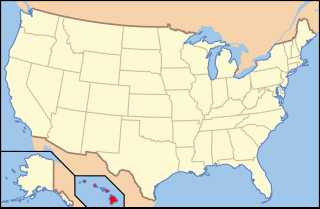Trial
Beginning on September 10, 1996, Judge Kevin S.C. Chang conducted the trial in the case of Baehr v. Miike, with the name of the new State Director of Health, Lawrence H. Miike, replacing that of his predecessor. Hawaii put forth five state interests it claimed were sufficiently "compelling" to allow it to bar same-sex couples from marrying. These interests were:
- protecting the health and welfare of children and other persons
- fostering procreation within a marital setting
- securing or assuring recognition of Hawaii marriages in other jurisdictions
- protecting the State's public fisc from the reasonably foreseeable effects of State approval of same-sex marriage in the laws of Hawaii
- protecting civil liberties, including the reasonably foreseeable effects of State approval of same-sex marriages, on its citizens.
The state called four expert witnesses with specialties in psychology and sociology. The plaintiffs also called four expert witnesses with specialties in psychology, sociology and child development. On December 3, 1996, Judge Chang ruled that the state had not established any compelling interest in denying same-sex couples the ability to marry and that, even if it had, it failed to prove that the Hawaii statute was narrowly tailored to avoid unnecessary abridgement of constitutional rights. He instructed the state to issue marriage licenses to otherwise-qualified same-sex couples. [9] The following day Chang stayed his ruling, acknowledging the "legally untenable" position couples would be in should the Supreme Court reverse him on appeal. [10]
Impact
As Congress considered passing DOMA, the House Judiciary Committee's Report on the legislation in 1996 discussed the implications of the Baehr case at length and argued for passage because "a redefinition of marriage in Hawaii to include homosexual couples could make such couples eligible for a whole range of federal rights and benefits." It said the proposed statute: [14]
...is a response to a very particular development in the State of Hawaii.... [T]he state courts in Hawaii appear to be on the verge of requiring that State to issue marriage licenses to same-sex couples. The prospect of permitting homosexual couples to "marry" in Hawaii threatens to have very real consequences both on federal law and on the laws (especially the marriage laws) of the various States.
In 1997, while the case was pending, and before the passage of the state constitutional amendment that reinforced the state's ban on same-sex marriage, the state responded to the recommendations of the Commission on Sexual Orientation and the Law by offering reciprocal beneficiary registration to any adults who were prohibited by state law from marrying, including same-sex couples, blood relatives, and housemates. The benefits that status provided were less than those of civil marriage. [15]
Baker v. Vermont, 744 A.2d 864, was a lawsuit decided by Vermont Supreme Court on December 20, 1999. It was one of the first judicial affirmations of the right of same-sex couples to treatment equivalent to that afforded different-sex couples. The decision held that the state's prohibition on same-sex marriage denied rights granted by the Vermont Constitution. The court ordered the Vermont legislature to either allow same-sex marriages or implement an alternative legal mechanism according similar rights to same-sex couples.

The availability of legally recognized same-sex marriage in the United States expanded from one state (Massachusetts) in 2004 to all fifty states in 2015 through various court rulings, state legislation, and direct popular votes. States each have separate marriage laws, which must adhere to rulings by the Supreme Court of the United States that recognize marriage as a fundamental right guaranteed by both the Due Process Clause and the Equal Protection Clause of the Fourteenth Amendment to the United States Constitution, as first established in the 1967 landmark civil rights case of Loving v. Virginia.
This is a list of notable events in the history of LGBT rights that took place in the year 2004.
This is a list of notable events in the history of LGBT rights that took place in the year 1996.
This is a list of notable events in the history of LGBT rights that took place in the year 1993.
This is a list of notable events in the history of LGBT rights that took place in the year 1999.
Steven H. Levinson is a former Associate Justice of the Supreme Court of Hawaii. Levinson served his first term from 1992 to 2002 and was retained by the Judicial Selection Commission to serve a second ten-year term. He retired from the court, effective December 31, 2008.
Same-sex marriage has been legal in California since June 28, 2013. The U.S. state first issued marriage licenses to same-sex couples on June 16, 2008 as a result of the Supreme Court of California finding in the case of In re Marriage Cases that barring same-sex couples from marriage violated the Constitution of California. The issuance of such licenses was halted from November 5, 2008 through June 27, 2013 due to the passage of Proposition 8—a state constitutional amendment barring same-sex marriages. The granting of same-sex marriages recommenced following the U.S. Supreme Court's decision in Hollingsworth v. Perry, which restored the effect of a federal district court ruling that overturned Proposition 8 as unconstitutional.

Constitutional Amendment 2 of 1998 amended the Constitution of Hawaii, granting the state legislature the power to prevent same-sex marriage from being conducted or recognized in Hawaii. Amendment 2 was the first constitutional amendment adopted in the United States that specifically targeted same-sex partnerships.

Same-sex marriage has been legal in Hawaii since December 2, 2013. The Hawaii State Legislature held a special session beginning on October 28, 2013, and passed the Hawaii Marriage Equality Act legalizing same-sex marriage. Governor Neil Abercrombie signed the legislation on November 13, and same-sex couples began marrying on December 2. Hawaii also allows both same-sex and opposite-sex couples to formalize their relationships legally in the form of civil unions and reciprocal beneficiary relationships. Civil unions provide the same rights, benefits, and obligations of marriage at the state level, while reciprocal beneficiary relationships provide a more limited set of rights.
In re Marriage Cases, 43 Cal. 4th 757 was a California Supreme Court case where the court held that laws treating classes of persons differently based on sexual orientation should be subject to strict judicial scrutiny, and that an existing statute and initiative measure limiting marriage to opposite-sex couples violate the rights of same-sex couples under the California Constitution and may not be used to preclude them from marrying.
Kerrigan v. Commissioner of Public Health, 289 Conn. 135, 957 A.2d 407, is a 2008 decision by the Connecticut Supreme Court holding that allowing same-sex couples to form same-sex unions but not marriages violates the Connecticut Constitution. It was the third time that a ruling by the highest court of a U.S. state legalized same-sex marriage, following Massachusetts in Goodridge v. Department of Public Health (2003) and California in In re Marriage Cases (2008). The decision legalized same-sex marriage in Connecticut when it came into effect on November 12, 2008. There were no attempts made to amend the state constitution to overrule the decision, and gender-neutral marriage statutes were passed into law in 2009.
Same-sex marriage has been legally recognized in Alaska since October 12, 2014, with an interruption from October 15 to 17 while state officials sought without success to delay the implementation of a federal court ruling. The U.S. District Court for the District of Alaska held on October 12 in the case of Hamby v. Parnell that Alaska's statutory and constitutional bans on same-sex marriage violated the Due Process and Equal Protection clauses of the U.S. Constitution. On October 15, state officials obtained a two-day stay from the Ninth Circuit Court of Appeals, which the U.S. Supreme Court refused to extend on October 17. Although Alaska is one of a few states which enforces a three-day waiting period between requesting a marriage license and conducting a marriage ceremony, at least one same-sex couple had the waiting period waived immediately after the district court's ruling. They married in Utqiagvik on October 13 and were the first same-sex couple to marry in Alaska.

Lesbian, gay, bisexual, and transgender (LGBT) persons in the U.S. state of Hawaii enjoy the same rights as non-LGBT people. Same-sex sexual activity has been legal since 1973; Hawaii being one of the first six states to legalize it. In 1993, a ruling by the Hawaiʻi Supreme Court made Hawaii the first state to consider legalizing same-sex marriage. Following the approval of the Hawaii Marriage Equality Act in November 2013, same-sex couples have been allowed to marry on the islands. Additionally, Hawaii law prohibits discrimination on the basis of both sexual orientation and gender identity, and the use of conversion therapy on minors has been banned since July 2018. Gay and lesbian couples enjoy the same rights, benefits and treatment as opposite-sex couples, including the right to marry and adopt.

In Hawaii, the LGBT laws have been evolving for the past hundred years. In the pre-19th century, the influence of Polynesian culture led to a more open-minded state. After the first Christian missionaries began arriving in Hawaii, strict sodomy laws were enacted. Territory v. Bell (1958) was the last sodomy case argued in Hawaii. After the turn of the 20th century, LGBT issues began being taken to and decided by the Supreme Court. In 2013, Hawaii voted in favor of gay marriage, and marriage licenses began to be issued to LGBT couples.
This article contains a timeline of significant events regarding same-sex marriage in the United States. On June 26, 2015, the landmark US Supreme Court decision in Obergefell v. Hodges effectively ended restrictions on same-sex marriage in the United States.
Same-sex marriage has been legally recognized in Idaho since October 15, 2014. In May 2014, the U.S. District Court for the District of Idaho in the case of Latta v. Otter found Idaho's statutory and state constitutional bans on same-sex marriage unconstitutional, but enforcement of that ruling was stayed pending appeal. The Ninth Circuit Court of Appeals affirmed that ruling on October 7, 2014, though the U.S. Supreme Court issued a stay of the ruling, which was not lifted until October 15, 2014.
Same-sex marriage has been legal in Kentucky since the U.S. Supreme Court's ruling in Obergefell v. Hodges on June 26, 2015. The decision, which struck down Kentucky's statutory and constitutional bans on same-sex marriages, was handed down on June 26, 2015, and Governor Steve Beshear and Attorney General Jack Conway announced almost immediately that the court's order would be implemented.
In the United States, the history of same-sex marriage dates from the early 1940s, when the first lawsuits seeking legal recognition of same-sex relationships brought the question of civil marriage rights and benefits for same-sex couples to public attention though they proved unsuccessful. However marriage wasn't a request for the LGBTQ movement until the Second National March on Washington for Lesbian and Gay Rights in Washington (1987). The subject became increasingly prominent in U.S. politics following the 1993 Hawaii Supreme Court decision in Baehr v. Miike that suggested the possibility that the state's prohibition might be unconstitutional. That decision was met by actions at both the federal and state level to restrict marriage to male-female couples, notably the enactment at the federal level of the Defense of Marriage Act.




